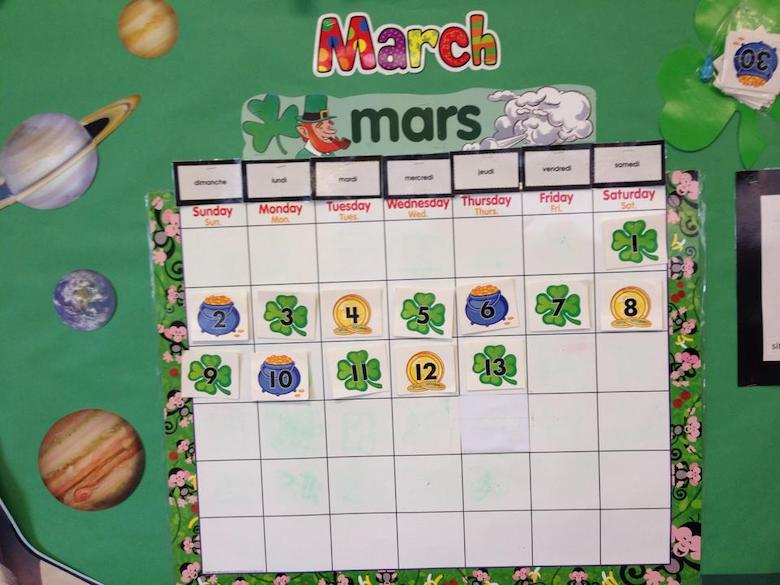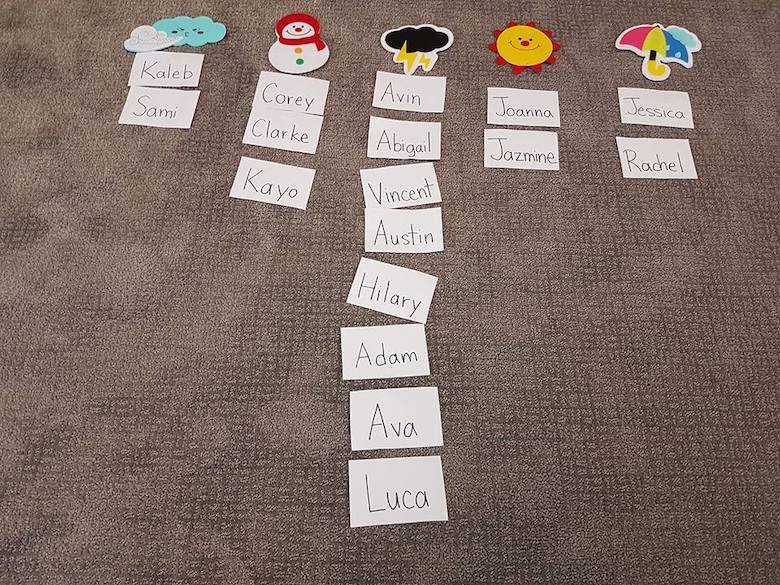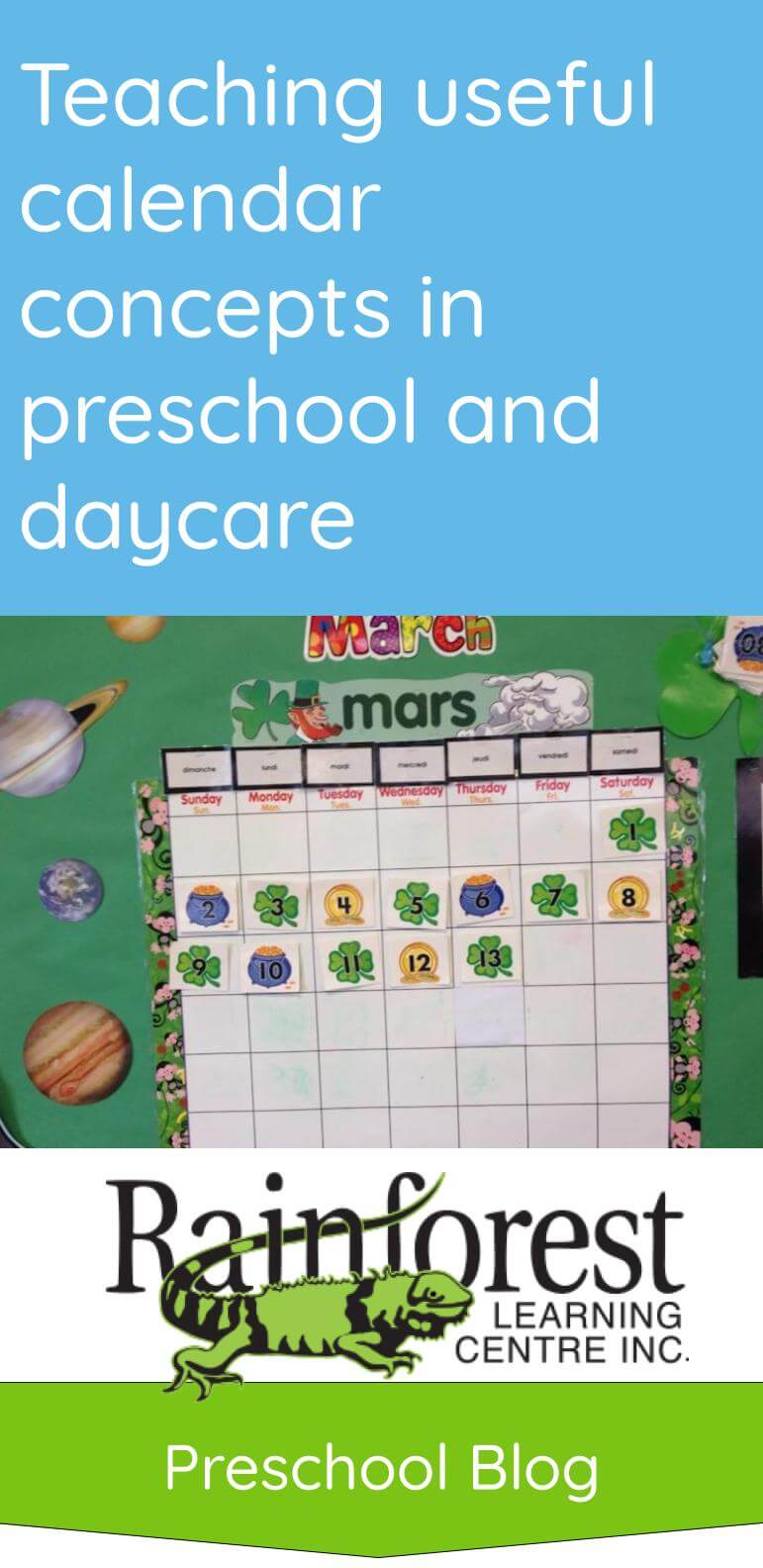
In the preschool world, there can be debate about whether or not to introduce calendar time into the day. It may be true that children in early childhood are simply not at the stage where they can understand calendars. They will likely pick it up quicker when they are in grade school. However, there are ways of teaching useful calendar concepts in preschool or daycare classrooms. These can be a lot more fun for the kids, too. They don’t have to be about counting days, or understanding lunar cycles, either.
In this article, we’ll give a few ideas on how to make calendar time a teachable, age-appropriate activity for preschoolers.
Teach the weather with picture calendars and art calendars
Every day is unique in its own ways. One of those ways is with weather. Using cut out shapes of a cartoon sun, a cloud with rain, lightning, snowflakes, ‘streams’ of wind, or soft clouds, you can place these on a calendar poster, to teach weather patterns. Attach them with velcro, pins, magnets or whatever you have on hand. Just make sure they are moveable, and you have at least 31 of each type of weather.
Another way to do this is with individual, smaller calendars for each child. Each day, they can have a little craft activity to draw the weather onto their ‘boxes’, which represent days of the month. As the early childhood educator, you can fill in the numbers and words to mark the days and months. Just let the kids have fun recording the weather with crayons, pencil crayons, paint, or whatever fun thing you can think of. At the end of the month, the children can review the weather, and how it changed from day to day, or week to week.
You can also ask the children to pick their favourite weather, and put their names beside their favourite weather. This is bringing in a simple concept of noticing weather differences, which happen on days, and in seasons.
When they get used to learning that the sun represents those warm bright days, and the water droplets and clouds represent the darker, wet days, you can also get them to watch or view weather forecasts.

Celebrate birthdays and holidays by marking them on a classroom calendar
Whether or not you teach children about how a month or week works, you can still mark special occasions in time with holidays and birthdays. This can be used to give children something to look forward to. They can learn the concept of waiting, and what a milestone is, after time has passed. And if not – at least there’s something to be happy about when their teacher announces there will be treats and decorations on a certain day!
On your classroom calendar, you can use flip cards, magnets, or velcro and paper cut outs of birthday cake, Christmas trees, clover leafs – whatever typically represents an upcoming special event. Use these as visuals queues on a poster calendar, so the children can see a progression of days (or at least time), until the event.
Oh, and advent calendars are great fun. Use them to count down to special days. It doesn’t have to be just for Christmas, and they don’t have to use only chocolates. Get creative, make them yourself, and use rewards like revealing the day’s fun craft, or a classroom visitor, and other festive fun like that.
Teach daily or weekly routines with day-based calendars
With this type of daily calendar, you’ll be getting into the ‘micro’ concept of time and scheduling with your kids. This is not so much about understanding what a ‘month’ looks like (that’s too abstract). They also don’t need to understand what “2 O’clock” is yet, and how that is different than “9 O’clock.” They simply need to understand routine. Thankfully, that’s a fairly easy concept for kids to grasp!
When teaching daily routine, you will probably want a vertical-based calendar – more like an agenda.
There are teaching tools you can buy out there for this. They can be magnetic, with a picture and label like, “Snack Time” or “Clean Your Toys” and things like that. As each activity passes, the children can put a check mark beside their labels, or move magnets and cards around on the calendar.
With a weekly routine, you can go either vertical or horizontal. Write the days of the week at the top of boxes, or columns that represent daily agendas, such as those noted above. Kids can then visually see their progress throughout the week, even if they don’t fully understand the concept of time. They’ll be able to see, for example, that yoga is not happening on the same day as music, or recycling day, but that these things follow routine, and happen regularly. They also teach responsibility and accomplishment to children, in an age-appropriate way.
Teach calendar vocabulary as a precursor to calendar concepts
Now, toddlers and preschoolers may not be able to grasp everything about calendars all at once. Remember, they are still learning words and even numbers, which also use words. They’re also still learning what it means when mom and days say they can play for “5 more minutes.” Some of them may not even understand that their play date with Tommy or Suzie isn’t in a few hours, but on a completely different day, after a few more sleeps and wake-ups.
So, if you start talking about “Wednesday” like it’s as casual as saying “trains” or “cheese stick”, but without a concrete object to point to, that can be confusing. It will take a while before a child understands what “Wednesday” is.
But – that doesn’t mean you can’t teach vocabulary to do with calendars. This can be in the form of rote memorization through chanting, songs, or just a fun game, like ‘simon says’ or ‘guess my favourite day of the week.’ For the kiddos learning to talk, this is just a playful thing to do. They can repeat after you, by saying “Sunday, Monday, Tuesday…” and so on. Then you can take turns and see if you can go in the same order.
You can do this for months of the year and seasons too. Flashcards are also great, since, even if they can’t read, they can at least see a picture and a word together, to know that graphical representations are associated with verbal words.
Then, when it comes time to actually teach calendar concepts, it will be a lot faster to pick it up. They will already have formed the foundation of memorizing calendar vocabulary, in its correct order, too.
Use calendars to teach numbers and counting as a cross-disciplinary lesson
In our article about teaching numbers, we discussed the importance of bringing counting into everyday life. Calendars are an excellent way to do this. It makes for a great cross-disciplinary lesson, too. Children can learn to count in sequence, but also learn that days are divided into separate representations on a calendar (if they can pick up the latter at an earlier age than others).
Using numbered squares on a 2D calendar, preschoolers can also learn their numbers through exposure and recognition. They don’t need to understand dates yet – just let them see numbers in use, as something important we have in our lives.
To conclude: calendars can still be useful teaching tools
As we’ve seen, teaching preschoolers about calendars can still be a fun and age-appropriate educational activity. The important thing is to keep the lesson topics simple, and not try to enforce them too harshly. If a child is not understanding the concept of past, present and future, it’s ok! They can have fun drawing or placing their favourite weather on a poster, or saying numbers out loud. It all counts as learning – as long as it’s fun!
See related on our blog:
- 4 Essential circle time ideas for preschools and daycares
- How to teach toddlers and preschoolers to count, and learn their numbers
- How to teach colours to toddlers and preschoolers
- What are the common types of play in childhood? Why are they important?
- How to teach toddlers and preschoolers to be responsible in an age-appropriate way
